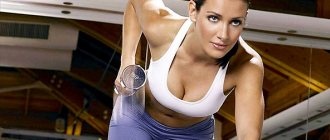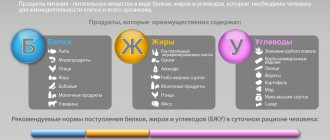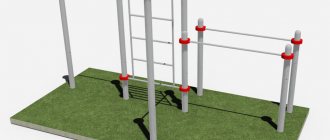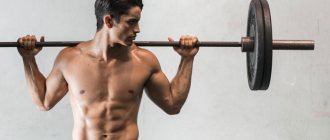Bench press your own weight
Conquering a barbell of your own weight is the line that separates novice athletes from experienced athletes. You can’t imagine how many people there are in the gym who have been training for years but are unable to lift their own weight. If you don't take into account the six-foot guys with extremely poor leverage, anyone can reach their weight on the bench press.
What's stopping you? For some there is a lack of technicality, for others there is an excess of variability.
Technique problem : to be strong, you must not only be able to contract your muscles, but also use your joints correctly. Some people use a grip that would fit a fifth grader - it's so narrow. In the bench press, your elbows should be under your wrists. Have someone watch how your forearms move as you press: they should be vertical for the most part. It may take you a few workouts to learn how to bench press like this; but then you can press more.
Bench press with correct technique:
See also: all basic exercises with correct technique.
The Variety Problem : Remove all the unnecessary stuff from your workouts. The regular (standing) press translates positively to the bench press, but endless variations with different inclines, dumbbell lifts, and butterflies waste energy. There's no point doing them anyway unless you're pressing your own bodyweight. Throw it away without regret, then add it later.
If you already bench press your weight, can you take it to your chest and do a front squat? What about the jerk? You get the idea - conquer your own weight on the barbell in different movements, this lays a good strength base.
Deadlift with two body weights
It also seems like an easy exam, but some people can’t pass it for years. Lack of technique, weak grip, lack of muscles, back injuries - many different reasons.
An interesting observation: it is useful for many to give up the deadlift for a while in order to increase their record in it. Pull-ups will strengthen your grip, swings will teach the pelvic girdle to work, squats will add meat. By the way, I have not seen a single weightlifter who would not lift a lot in the classic deadlift, and they do not practice it at all. Get stronger in other exercises and your deadlift will increase too.
Not all powerlifters will agree with this, but the great champion Hugh Cassidy used to say that only a gorilla could lift more than once a week. So what to do in other workouts? Just “plow”: push and pull sleds, squat, do farmer’s walks, gain strength. Three-four-five-six months of hard training without deadlifting will only benefit her.
Two minutes plank
Personally, I prefer the traditional plank position, but you can choose any variation. The main thing is to hold it for 120 seconds. Dr. Stu McGill said that if you can't do a couple of minutes of planking, you either have too much fat or no abs. I’ll add: either you don’t know how to tense your muscles and hold tension. This is exactly what the plank teaches, and this is exactly the skill that beginners lack: they simply cannot bring the whole body together to lift a large weight.
Plank.
There is another way, for example, a farmer's walk with a weight in one hand. This “suitcase” version is a bar in dynamics. Just don’t chase weight, try 20 kg, not all 50 at once. You need to walk gracefully, and not sway like a blade of grass in the wind.
These walks are easy to add at the end of any workout: pick up the apparatus with one hand, carry it as far as possible, and bring it back with the other. You will immediately know how strong your grip is. And tomorrow you will discover the existence of some muscles on the sides of the body.
Endurance tests
These tests must be performed with a number of points in mind. First, I want people to have choice. Not everyone has a prowler machine at their disposal. Likewise, not everyone is able to run a mile due to their heavy weight. Only two of these tests require special equipment, and since you don't have to do all the tests, everyone has a chance to score well.
Secondly, I wanted to have short and long tests available. Some people run a mile easily, while others struggle, no matter how much they run. Complete any test or tests that you are able to complete.
1 mile race
The 1 mile race is very simple and only requires you to run 1 mile against the clock. The second test is done on an AirDyne trainer (such as the AD6), which measures the distance you travel in 20 minutes. This is ideal for heavier people as it reduces the stress on the knees, hips and ankles.
300m shuttle run
The next test is the 300 meter shuttle run. The test is performed by a series of 30 meter sprints in two complete sets. After the first set, you need to rest for 5 minutes and perform the race again. The final time will be obtained by calculating the average of the two runs. When performing this test, watch for sharp turns and try to move in a straight line. If you round corners, you will waste time.
“One-pillow” sleep
If you need two pillows (or more) to sleep well, it's time to work on your stretching, flexibility, and mobility, and it might be a good idea to check with your doctor. When you need to raise your head high (when sleeping on your back), this may be a sign of excessive kyphosis, in other words, you are too slouched.
Vladimir Yanda revealed to us half a century ago that the tonic muscles (especially the pectoralis, biceps, hamstrings and hip flexors) tighten with age, due to injury or weakness. So start stretching them.
When the problem is more serious, for example in the joints, then do not self-medicate, but consult a specialist. Noticeable asymmetry and various posture disorders affect both sleep and everything else in life. The sooner you fix them, the better for you. Sleep better and you'll lift more.
How does manual muscle testing work?
The kinesiologist presses on your hands. Most often by hand. But it can test any muscle in the body (quadriceps, gluteus medius, even basic osteopathic tissue resistance).
Depending on whether there is stress on the problem, or on whether the subconscious mind agrees with the question asked, the test will be strong or weak.
A “strong” test, or more professionally, a blocked muscle, means there is no stress. And also the answer is “YES”.
A “weak” test, or an unlocked muscle, means there is stress. And also the answer is “NO”.
✅ For example, if you are afraid of performing and go on stage, your knees begin to shake. This happens because stress causes the leg muscles to weaken dramatically. This causes an imbalance between the leg flexors and extensors and the knees involuntarily begin to jerk in an attempt to keep you on your feet.
Sit-to-stand test
Try sitting on the floor without supporting anything with your hands, knees, or shins. Happened? Then try to stand up - also without touching anything, just your feet on the floor.
This ability is vital for you and I am not exaggerating - that's what scientists say. Using this test, researchers can predict life expectancy. And we will learn something more about our flexibility, strength and coordination.
If you are under fifty and cannot cope with this test, you should think about your physical fitness and health in general. Believe me, it’s better to fix this now; it may not be possible in retirement.
Here's how to do this test correctly:
How to get a reliable answer from the subconscious? Muscle test
The muscle test is a very simple and effective method of using your subconscious to get an answer to any question using a bodily response. The body stores information about everything that happens to it and can share this information if you talk to it in the language of muscle testing.
There is such a science - Kinesiology , literally the study of body movements - this is a holistic approach to balancing the movements and interactions of human energy systems. The use of muscle testing helps identify areas where a blockage or imbalance is interfering with a person's physical, emotional or energetic well-being.
Kinesiology developed in the 60s from chiropractic, osteopathy and other sciences. The founder of kinesiology in its modern form, the American George Goodhardt, took as a basis the ancient method of the Indians, developed it, creating a fairly coherent theory, which is based on a muscle test, which is considered the most accurate and effective tool in the science of movements.
Muscle testing identifies stressful areas in a person's life and clarifies the emotional trauma that led to problems.
The muscle test is a universal tool for assessing the presence of biological resonance. Its essence is due to the fact that muscles are very sensitive to various stimuli that are offered to the body. If the stimulus leads to an increase in vital energy , then the muscle being studied remains strong . If the result of the stimulus is a decrease in vital energy, then the muscle loses strength and becomes hypotonic.
A muscle test makes it possible to ask questions of the body and receive binary answers in the form of “yes” or “no” (there is resonance, there is no resonance). For example, we want to test the body’s tolerance to some food product. We can place this product in contact with the test subject's body and perform a muscle test. We ask you to tense the muscle that you have chosen as an indicator. If there is a decrease in the tone of this indicator muscle, it seems to weaken, we say that the product is not suitable for the person. This is not to say that the muscle completely loses its ability to contract. But her strength is noticeably reduced.
Another option is to use a muscle (muscle) test . We ask the subject to think about some unresolved problem, something that causes unpleasant sensations or memories in him. During testing, we immediately note a drop in the tone of the muscle being tested. If the subject quickly switches to a “pleasant” situation that evokes positive feelings in him, the indicator will immediately increase. Thus, we have the opportunity to “communicate” with the patient’s body, bypassing his conscious part, his mind and senses. We do this through the body.
A muscle test is a gateway to the unconscious, which, like a black box, contains all the information about us, our entire history, all unresolved situations and problems. With its help, we begin to better understand not only our mind, but ourselves as a whole, our unconscious, our “shadow” part and those unresolved conflicts from the past that are not realized, but which continue to play an important role in our lives.
The test helps to “pull out” our emotional blocks one by one, diagnose these chains and, thus, understand a person’s history. And through history - the present and the causes of today's problems.
How and in what cases is it advisable to use the Muscle Test?
Muscle test can be used:
1. Like a “lie detector”.
Check it out for yourself with simple questions. For example, your partner is a man. You test his deltoid muscle, for example, and get strength. Then ask him to say the affirmation: “I am a woman.” A moment of confusion in the nervous system will always result in muscle weakness. That is, the answer you received to the statement “I am a woman” was given by the person: “No.”
This test greatly amuses the children, but after their statement: “It’s good for me to eat ice cream three times a day,” the answer is “no,” they refuse to be tested, under the pretext that you will now know everything about them :))
2.When selecting healthy foods and drinks.
With the help of a muscle test, you can accurately determine the answers to the questions: “Which available products are suitable for you or your child at a given time? What will help you get back to a slim figure? and so on. When you use this test right in the store, you will be able to make healthy purchases and save yourself from wasting money on useless and sometimes harmful products. That's exactly what I do.
3. When selecting music, colors, paintings that enhance your vital energy.
John Diamond, a famous Australian psychotherapist and kinesiologist, has many interesting works and books on this topic.
4. When determining geopathogenic zones.
5. When selecting physical exercises.
For example, you may not know that running and jumping, taking into account the current state of all body systems, does not benefit you; on the contrary, it can cause harm. A muscle test will help you successfully select effective and safe exercises for yourself right on the sports field or in the fitness room. Do not ignore the body's prompts. It knows better what is useful and safe for it.
6. As a tool for self-knowledge, self-psychoanalysis.
Often people do not know how to hear and understand themselves, it is difficult for them to make a choice. A muscle test will open the door to your subconscious, where you store “everything about yourself.”
7. When choosing a name or pseudonym.
Unfortunately, the names given by our parents at birth do not always suit us.
8.When selecting medications or cosmetics and hygiene products
By the way, you can determine with the help of a muscle test whether there will be side effects of the drugs, and on which body systems they will most affect. This will determine your choice.
9.Muscle test is one of the tools for working in theta-healing.
This is NOT fortune telling, NOT a prediction, it is a “test” of your body for the presence/absence of beliefs and programs.
10. A muscle test allows you to find a “primary emotion ” - that trigger point, the starting moment that launches subsequent ones and shapes our reality, which we are not aware of . The test allows us to look at ourselves from a different perspective. He makes us honest.
How to do a muscle test yourself?
There are several options for muscle testing; I will describe those that I myself use for personal purposes and when working with clients.
Option No. 1
It is assumed that the test taker stands up, lowers his arms along his body, closes his eyes and relaxes. First he does a test, asking himself the questions: “I am a man” or “I am a woman” and tell yourself: if the answer is “Yes,” the body will swing forward, if the answer is “No,” the body will swing back. And then, having made sure that the body reacts to your statements, swinging here or there, you can move on to questions that are more relevant to yourself. This method is very simple, my 7-year-old daughter mastered it and successfully uses it in matters of choosing food, entertainment, as well as in resolving issues that arise when I am not with her and she has no one to consult with, for example at school.
Option No. 2
Place one hand on the top of your head, palm down. Rub the thumb and index finger of your other hand together. Remember the feeling of the density of this friction. Now turn your hand with your palm up - turn it away from the top of your head. Rub your fingers together again. Compare the sensations.
In the second case, you will most likely feel that the rubbing surfaces are touching less tightly and sliding slightly. Don't expect the difference to be very bright, it may be subtle, but it needs to be felt and remembered.
These sensations of tight friction or sliding are your body's responses. The first means: “Yes” - there is a flow between the head and the palm. The second means: “No” - the flow does not flow, the connection is broken. The first reaction is called strong , the second weak .
The same can be done by placing your hand not on your head, but on the heart area (if you feel that this is more comfortable for you)
Now place your hand or finger on the medicine and rub the fingers of your other hand together. If the reaction is strong, the medicine is suitable for you; if it is weak, it is not.
Option No. 3
Connect the first and second fingers of your non-dominant hand (for example, your left) with a ring and try to open this ring with the index finger of your other hand.
Say out loud “Show me the answer “Yes”” and remember how hard you squeeze the fingers of your left hand. The ring will be difficult to open. Say out loud “Show me the answer “No.” The ring of fingers will be easier to break.
Now put your hand on any food item. If the energy of the product does not suit you, muscle strength decreases sharply and the ring of fingers will be easy to open.
Conditions under which the muscle test does not work
Muscle testing is a great tool for getting answers, but you need to know that there are conditions under which the test will not work. You should not rely on the accuracy of the test if:
- dehydration of the body
-presence of breath holding
- the presence of muscle hyper- or hypotonicity in a person - the same reaction to “yes” and “no” - subconscious fear.
We can deceive ourselves, our body never!
Use this tool for self-knowledge and to ensure the safety of your life and the lives of your loved ones.
Share on social media networks
RќСЂР°РІРёС‚СЃСЏ
Share link:
Liked this:
Like











